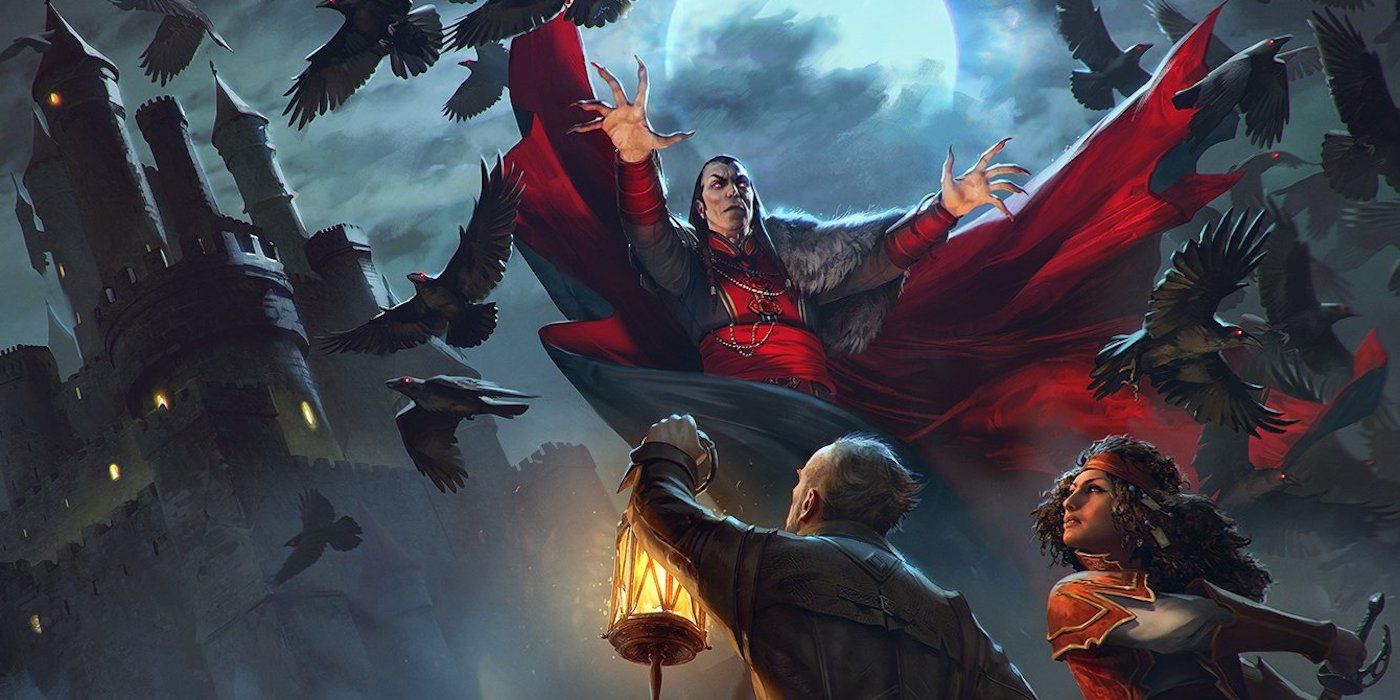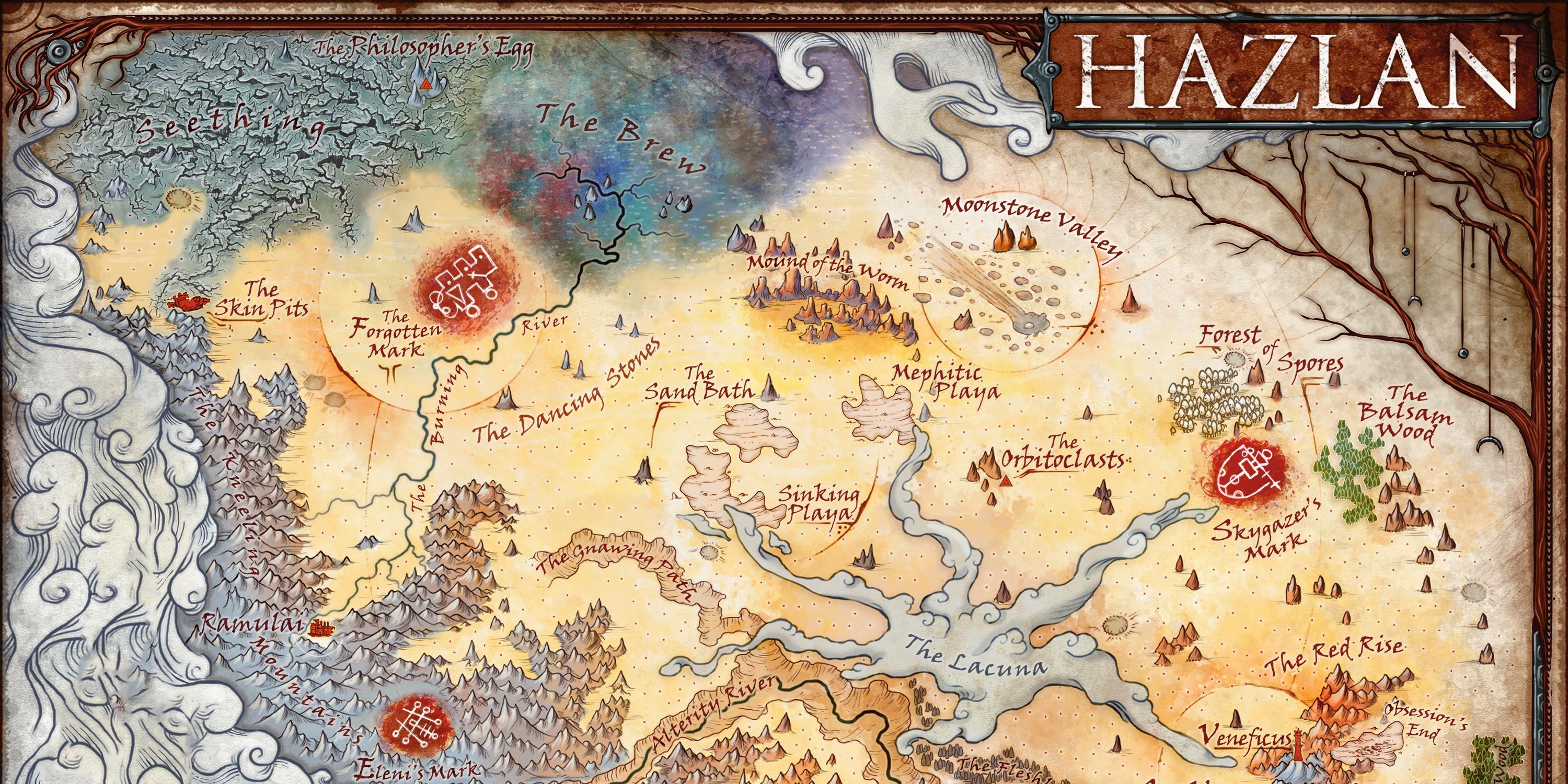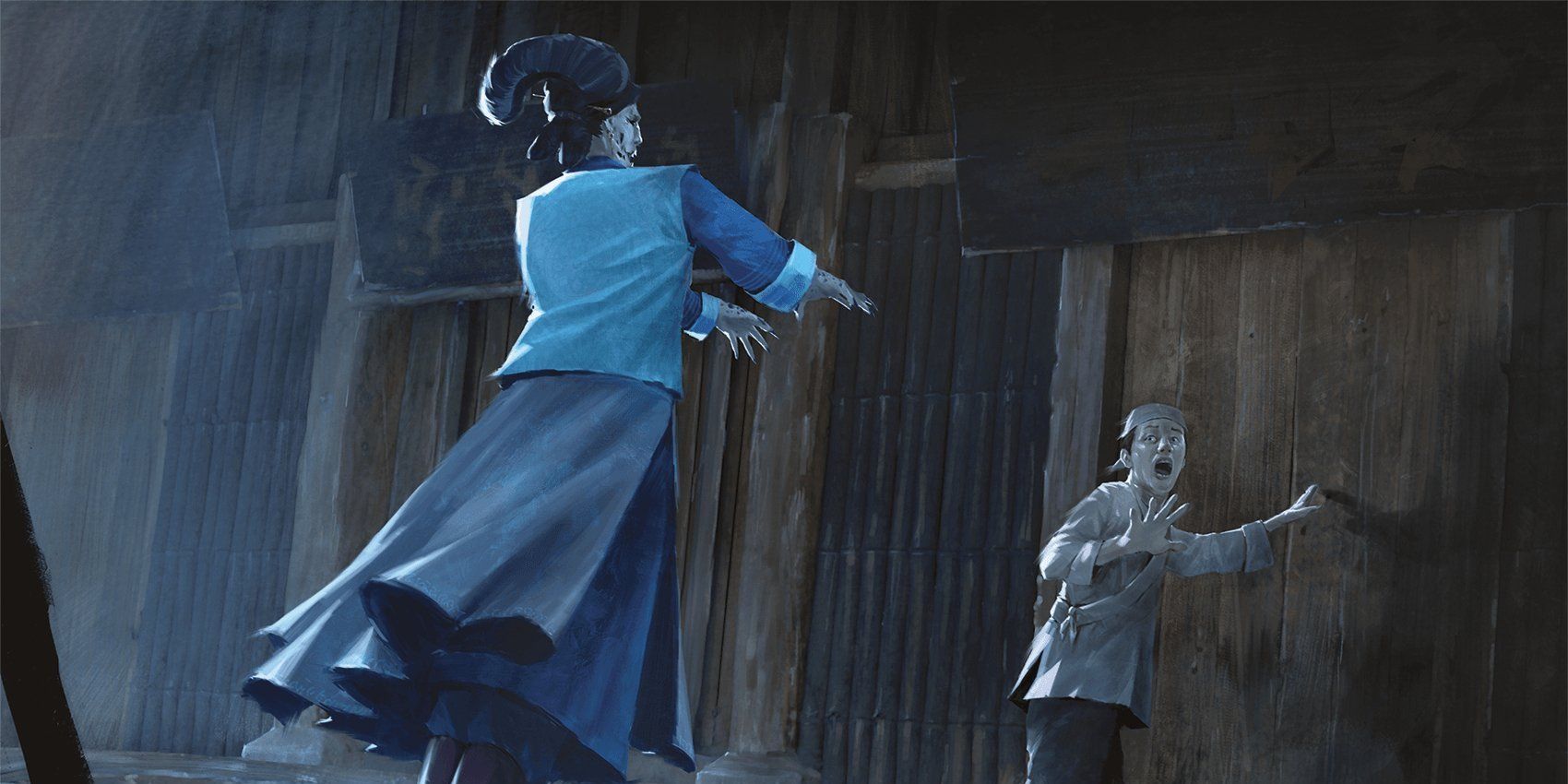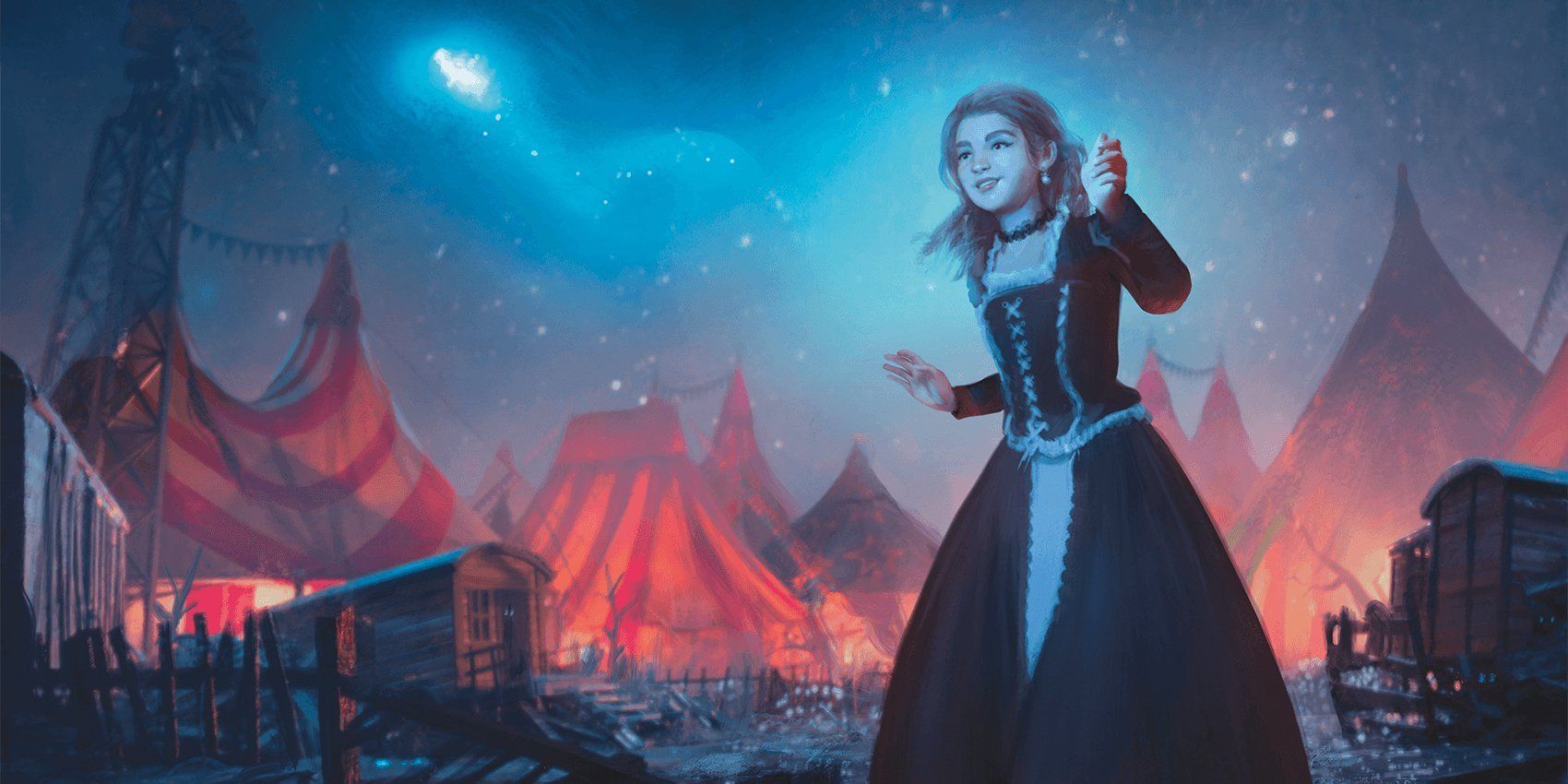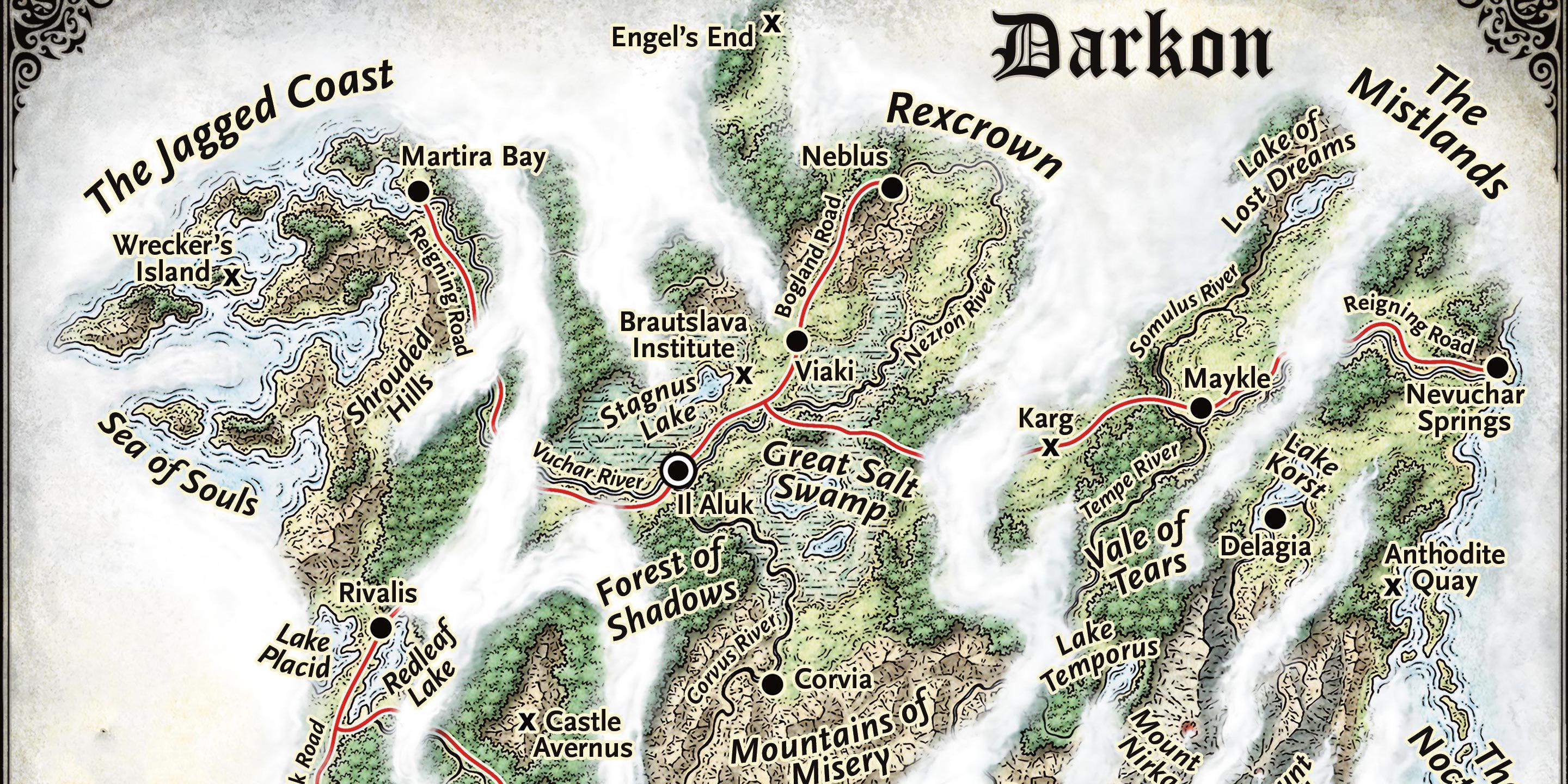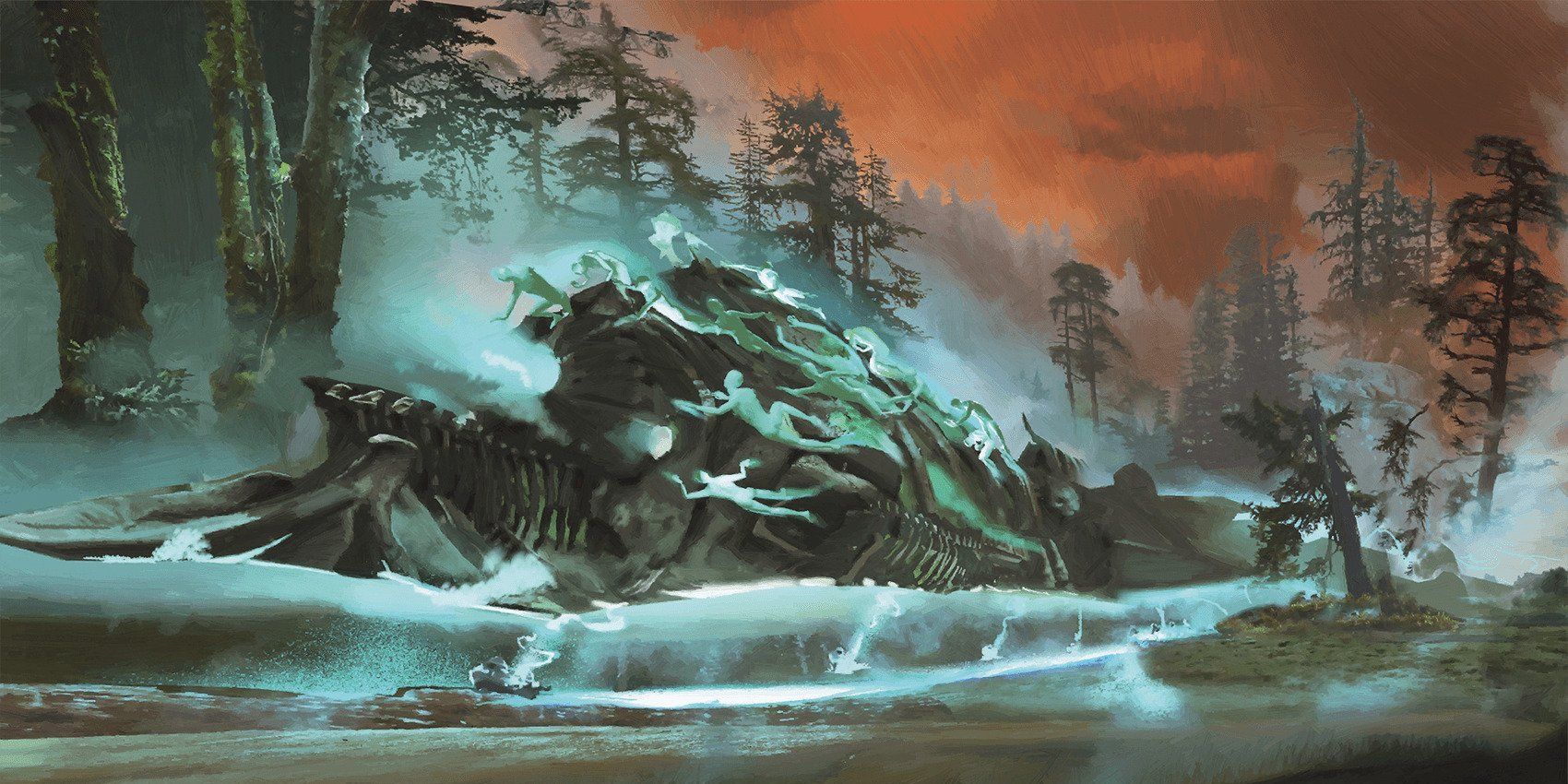Dungeons & Dragons' latest sourcebook is Van Richten's Guide to Ravenloft, an expansion to the setting first brought to Fifth Edition by the Curse of Strahd module. However, unlike Curse of Strahd, Van Richten's Guide doesn't describe a series of adventure hooks or a cohesive narrative for players to follow. Instead, it provides a setting for Dungeon Masters to manipulate as they so please.
Instead of giving more details on the land of Barovia (the Curse of Strahd's setting), Van Richten's Guide expands the world of Ravenloft more than tenfold by making Barovia one of many Domains encircled by ever-present mists. It then gives players details for dozens of other such Domains, each unique in premise and flavor while still delivering horror of some kind. The mists act as a method of travel between different Domains, each of which has its own Darklord ruling over it the way Strahd rules over Barovia. However, with so many worlds to pick from, it can be hard to know where to look. Here are a few that stand out.
Hazlan
Each Domain has magical and supernatural elements, but Hazlan doubles down on magic itself as a theme to the world's horror. The land is ruled by Hazlik, a terrifyingly powerful wizard who bestows his favor upon only the most magically talented. This means each citizen is constantly striving to outdo one another in feats of magical prowess, littering the land with the results.
Hazlan itself is a massive laboratory experiment gone wrong, both in the small disasters that cover its surface and in the nature of the world itself. Casting any sort of magic can have unpredictable results, as players must roll a d10 when they expend a spell slot of first level or higher. Rolling a one forces a roll on a custom Wild Magic table, with results ranging from spontaneous combustion to tearing open portals in the fabric of reality.
Like most Darklords, Hazlik has a tragic backstory. Originally part of an order of mages, he was tricked into believing his lover sought to betray him. Enraged, Hazlik transformed his fellow mage into a living portal. The rulers of the lands condemned Hazlik to torture as punishment for his monstrous experiment, and he fled through the portal to escape. Then, the Dark Powers of Ravenloft drew him into the mists, with the wizard eventually emerging into a land he claimed for his own. Hazlan is a reflection of its Darklord's lack of morals, and players unlucky enough to find themselves there will have to contend with his wicked experiments.
I'Cath
I'Cath is defined by the dreams of its Darklord, the mage Tsien Chang. Originally the ruler of the city in better times, Tsien Chang created the realm as it exists today by abusing the power of the Nightingale Bell, a magic item said to grant the dreams of its wielder. Instead of making the city perfect as Tsien Chang wished, the Bell split it into two mirror halves: a dreaming and waking world. In the dreams of its citizens I'Cath is a shining golden city of absolute order -- but in reality, it's a city of ghosts, stalked by vengeful jiangshi who carry out their Darklord's every whim.
Many Ravenloft Domains borrow aesthetics and ideas from a specific culture, and I'Cath draws from Chinese folklore. The jiangshi are based upon a kind of vampire from traditional Chinese tales, although they're used in I'Cath as grim enforcers. They permeate both the sleeping and waking forms of the city, rearranging its physical layout and forcing the inhabitants of its dreaming world to do the same. Disobeying them can have strict consequences, as being killed while in the dreaming version of the city prevents a character from gaining the benefits of a long rest.
The Carnival
The Carnival breaks from the traditional mold established for other Domains, and pops up inside them. It's less of a world of its own and more of a traveling circus, overlapping with other Domains on a whim as it moves about. This makes it less insular than other Domains, as it intermingles freely with their populations. DMs running The Carnival have to consider the context of the world it emerges into. It might be filled with all sorts of magical spectacles when it visits Hazlan, or it might only appear in only the waking or dreaming version of I'Cath.
The Carnival is "run" by Isolde, an elven Paladin originally from the depths of the Feywild. Her traveling companions were slain by a powerful field known as The Caller, and in her grief, she succumbed to the machinations of a powerful Archfey, who offered to let her forget her woes by traveling at the head of a fey carnival. During her journey she encountered a pair of traveling shadar-kai, and received from them a sentient Holy Avenger blade named Nepenthe. Nepenthe is the true Darklord of The Carnival, and constantly stokes Isolde's need for vengeance, whispering fantasies of the elf's next encounter with The Caller to rile up her bloodlust.
Darkon
Like the Carnival, Darkon is an exception among the Domains of Ravenloft, though Darkon's eccentricity is fairly straightforward: It doesn't have a Darklord. Originally ruled by a lich named Azalin Rex, Darkon was forever changed when its Darklord managed to escape Ravenloft, disappearing in a magical cataclysm known as the Hour of Ascension. Leaving behind a golden star known as the King's Tear, Azalin vanished. Without a Darklord Darkon is slowly collapsing, as the mists that surround all Domains creep inwards, slowly shrinking the realm and consuming all those that enter within.
Players entering Darkon will have to contend with its slow demise, as well as the pretenders who seek to claim Azalin's throne. These include Alcio Metus (a vampire who has co-opted the realm's secret police, known as the Kargat, in the hopes of finding and killing Rudolph Van Richten), Darcalus Rex (the disembodied spirit of the Domain's former ruler) and Madame Eris (a duplicitous and permanently invisible noblewoman). Darkon combines political intrigue with post-apocalyptic dystopia, as its inhabitants vie for the remnants of power while the world crumbles around them.
Cyre 1313
While Van Richten's Guide fully fleshes out a considerable amount of Domains, some only a few paragraphs of description. One such realm is Cyre 1313, the Mourning Rail. Originally built in a city named Metron, Cyre 1313 was designed to shelter its passengers from a disaster befalling the land of Cyre, known only as the Mourning. Held back to accommodate a late passenger, Cyre 1313 stayed still for too long and was also consumed by the Mourning, its lightning engine transformed into a necrotic dynamo fueled by the spirits of the damned.
This interpretation of Cyre 1313 makes for a compelling set piece, but some DMs might also be interested in building out a world where the lightning rail departed in time, only to barrel into Ravenloft and become its fastest-moving Domain. Picture a campaign setting akin to TNT's Snowpiercer, a world where passengers struggle to survive in a world reduced down to the carriages of a passenger train. This would also let Cyre 1313 travel through other Domains in a fashion akin to The Carnival, with players trying to convince its passengers of the existence of a world outside the train's walls.
The Domains presented in Van Richten's Guide to Ravenloft are fascinating, but the best trick available to Dungeon Masters is always to remix, retool and recombine what's available so that it is just right for their campaign.

